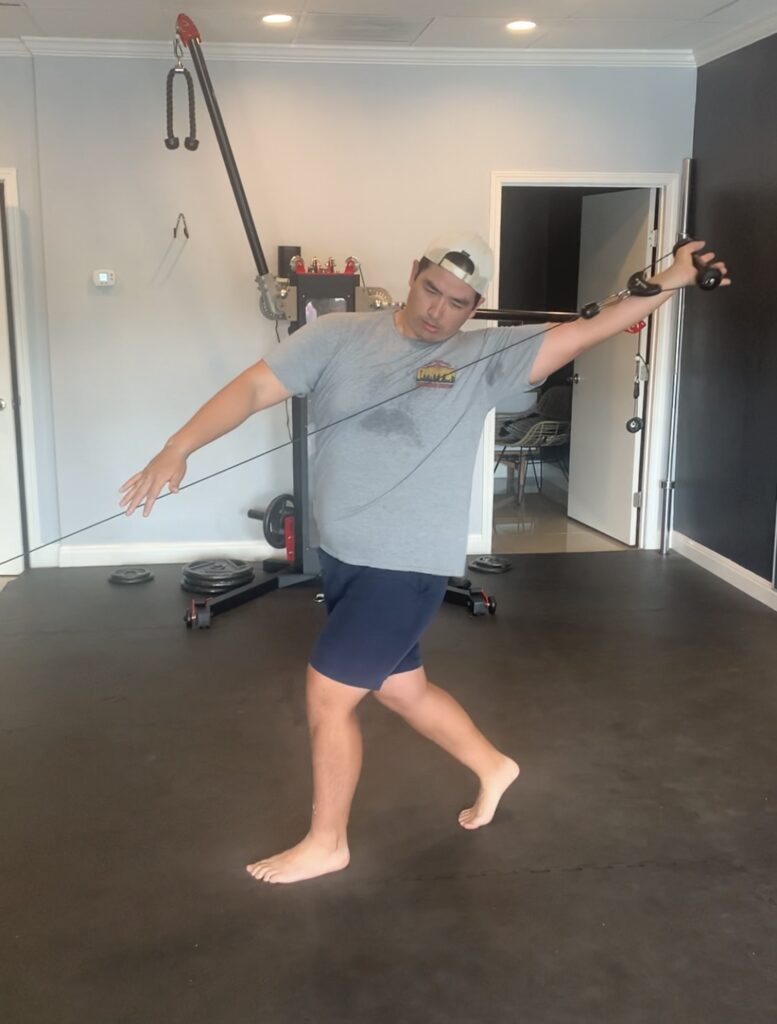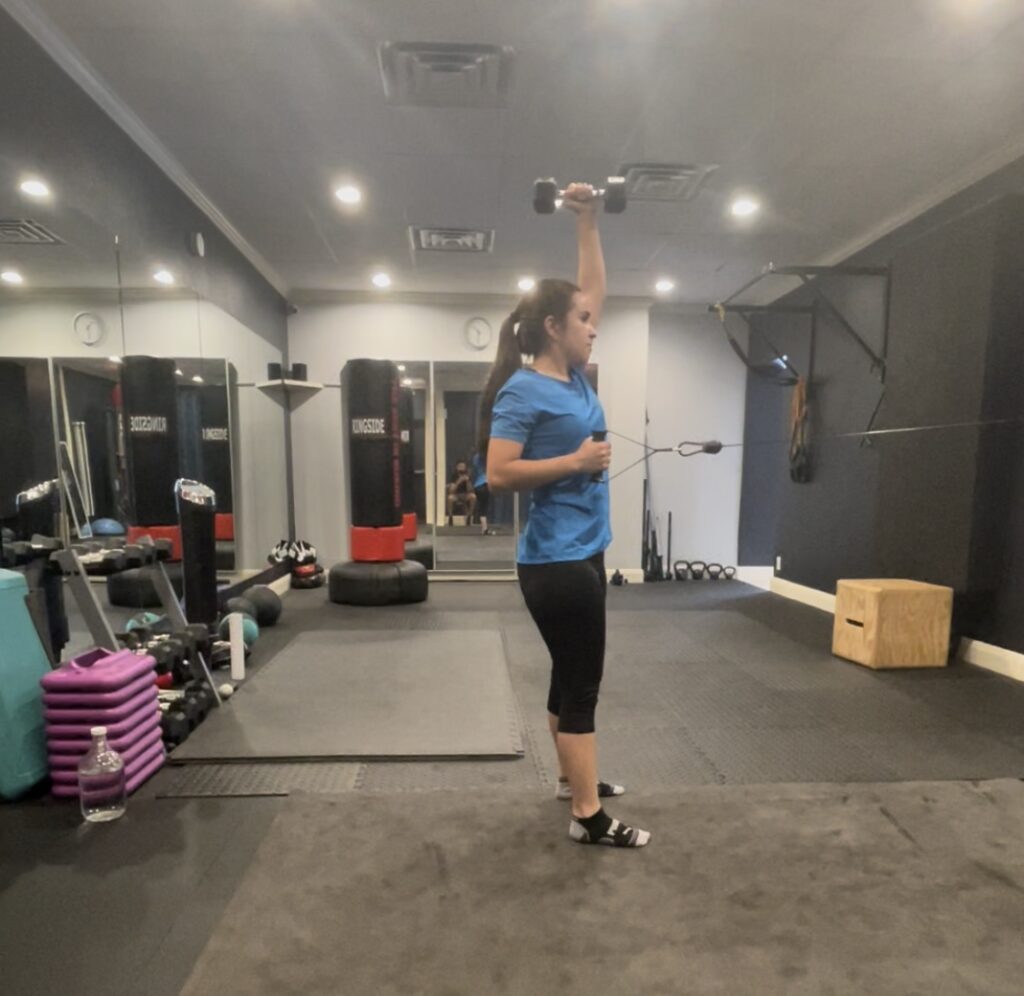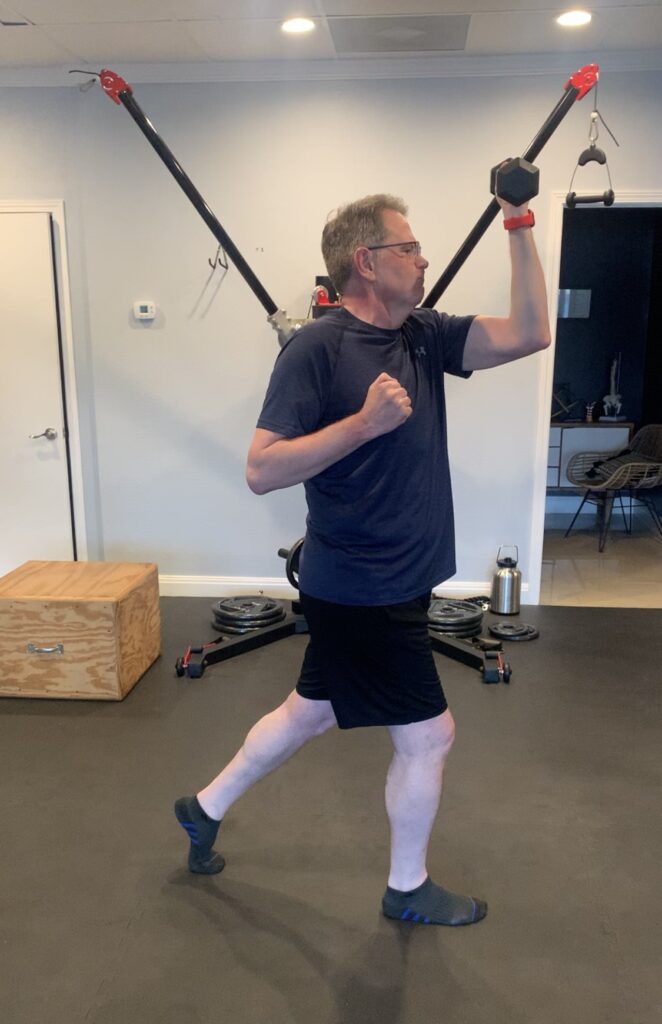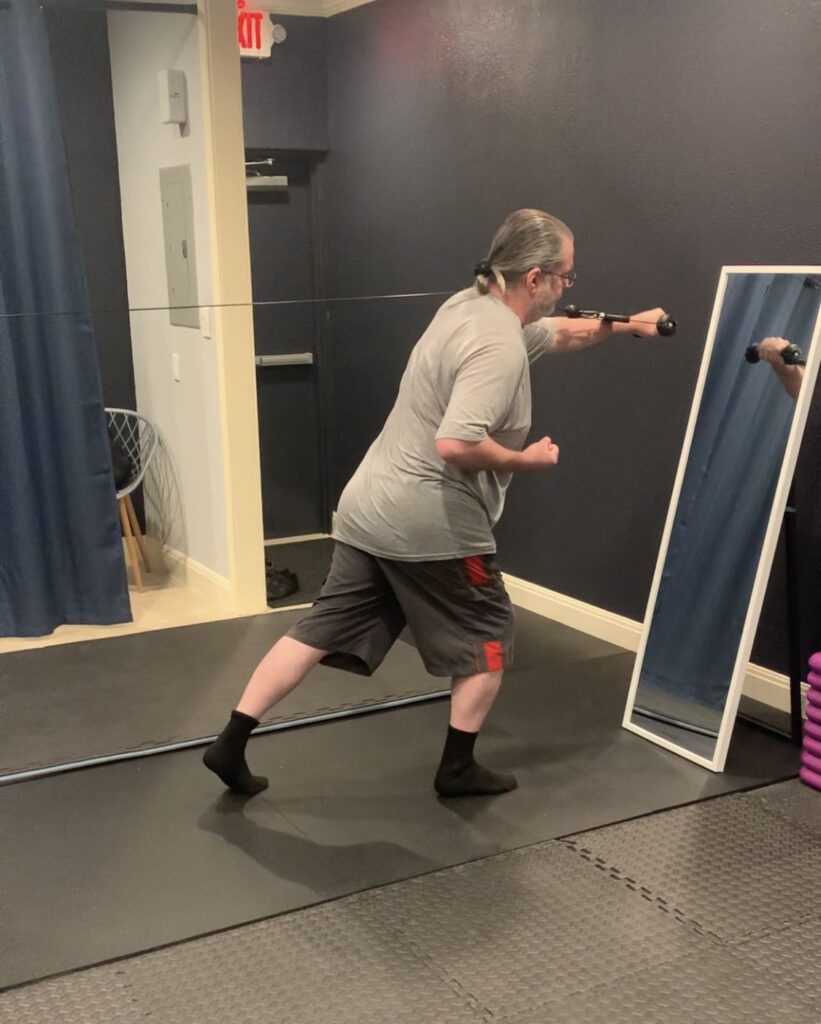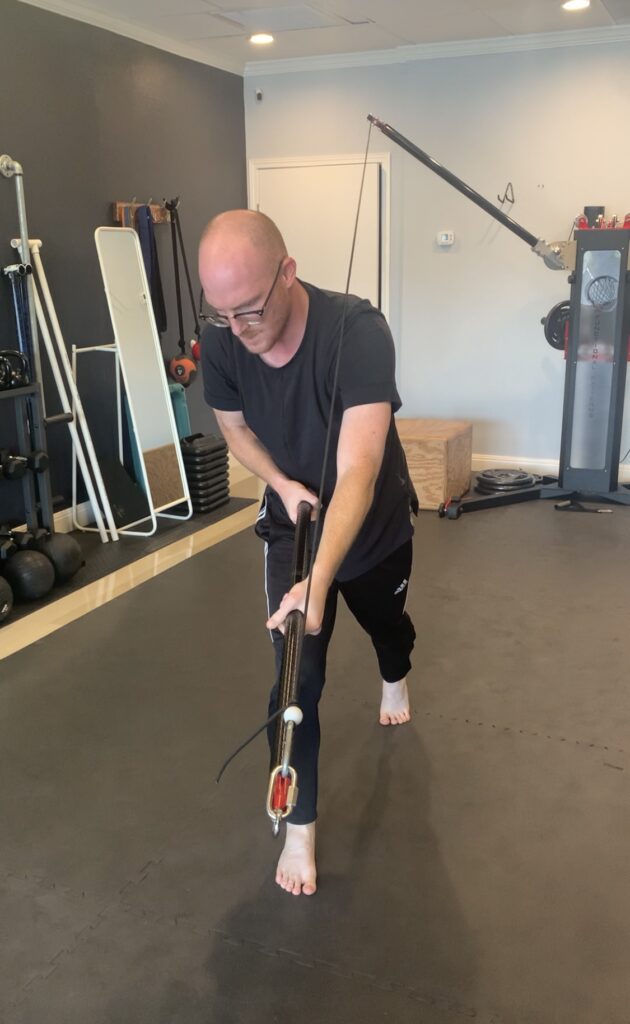A lot comes to mind when users experience the style of training we implement, it’s “weird, unconventional, confusing” yet “applicable, practical, sustainable, and for a purpose.”
We utilize Functional Patterns techniques and methodologies to produce changes on the human body that forms of traditional training and therapies aim to do, but can’t. It boils down to what is relevant and what is not… aka useless.
Are back squats, bench presses, mini band walks, and clam shells making the most of time spent exercising or rehabbing? From personal and observational experience, no. They might help, a little bit, for some strength and general movement to avoid being a couch potato, but the risks outweigh the benefits, and the carry over is minimal compared to what the human body actually needs.
As pictured, the way humans move most is via contralateral reciprocation- opposing limbs connecting. When one leg is forward, the other is back. When the leg is back, that same arm is forward. Exercise patterns should aim to respect this fundamental concept of movement, as it relates to the human body. IF we only had an upper body, then the isolation of the bench press would be more appropriate. Rather our pec muscles connect through fascia across our body via the oblique slings, to the opposing leg muscles of the hip and inner thigh. Isolation destroys these connections and teaches the body to work in isolation, when in reality it integrates to function as an efficient unit.
The human body evolved to walk, run, and throw. Thus our muscular connections developed to support these functions, so training the body in isolation continuously without training the entire muscular chain, and the chains it connects to, is a recipe for a degenerated body.
Integrated movement is one thing, but integrating your muscles through exercise patterns that mirror the way the body moves in real life is the recipe for a fully functioning, high performing body in life outside of the gym.

Moving to stay healthy and avoid a sedentary lifestyle is beneficial, and as mentioned earlier, the benefits are enhanced when the proper training stimulus is implemented. The risks of training your body the way the mainstream gym culture advertises leads to some muscle strength and overall muscle mass, but at the expense of joint pain, lower back stiffness, having to wear a knee brace, and a general decline in your capabilities in activities outside of the gym.
Whereas movement that replicates the way the human body moves on a day to day basis enhances your quality of life in the real world. Recreational activities like golf and tennis can be played without aches and pains, your muscles learn to leverage your motion rather than unnecessary strain on the joints as levers, and an overall freedom with your everyday movement manifests. In other words, the benefits of exercise extend far beyond the exercise itself and last long after the exercise is over.
The way we integrate the muscles during movement has a lasting impact and carry over to reality is because our focus is on human biomechanics. Relevant movement that conditions the body according to your biological blueprint rather than arbitrarily lifting weights balancing on one foot and raising a dumbbell out to the side at the same time. There are multiple ways to train multiple muscles at once but only one way to train the muscles for a purpose beyond exercise.
The arbitrary exercise pattern has minimal carry over other than simply challenging your coordination, balance, and some multiplanar muscle activation. The intent is right but the execution won’t support the desired outcome. Creating a movement sequence to build tension from the ground up, rotating your body to create a lever to lift the weight overhead at the end of the rotation, and raising an opposing leg to the weight over head to counter balance the tensions and produce contralateral connections throughout the body. While maintaining proper core pressure, leg, arm, pelvis, and ribcage alignment before, during, and after the movement. Following a sequence to produce the right muscle tensions at the right time. All through patterns that your body moves through daily, so your muscles are programmed to work automatically rather than having to consciously be aware of your glutes firing properly during a run or on the tennis courts.
Wow that’s a lot to think about! And it’s necessary, if you’re legitimately concerned about aging well, performing optimally, and living life without working through pain. We don’y mindlessly count reps, every rep is corrected to make the most of the movement and connect your brain and body in new ways. Over time your body learns to self correct the fundamentals of human movement and we are able to add more variables to the mix and maximize the muscle function and carry it over to your daily living.
This isn’t your typical gym, we educate our clients on the importance of why moving intentionally is necessary, how to manage your pain by reprogramming better movement capabilities, what parts of the body connect with other parts to make up an efficient whole, when to move a muscle to create a contraction and a pairing with the opposing muscle, and who is in control of it all- your mind and your body.
